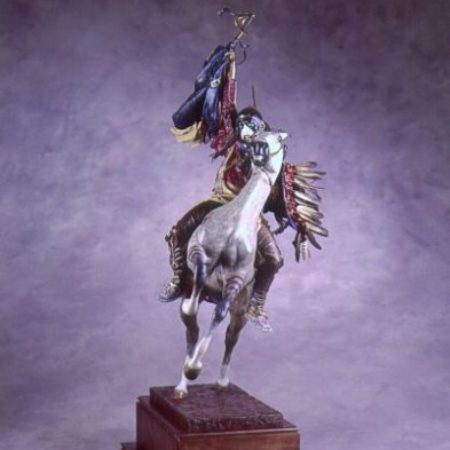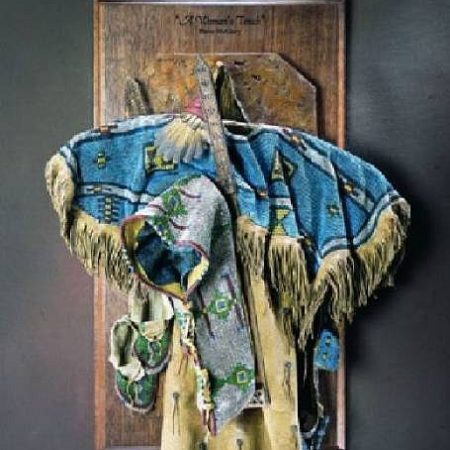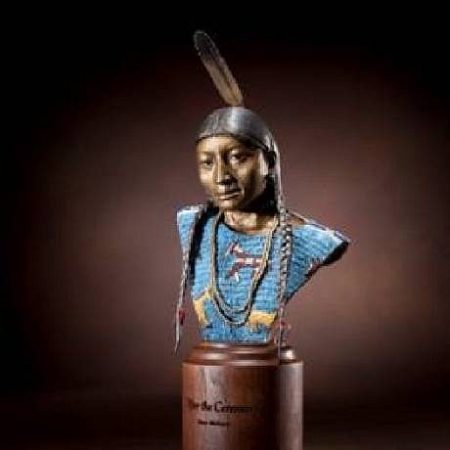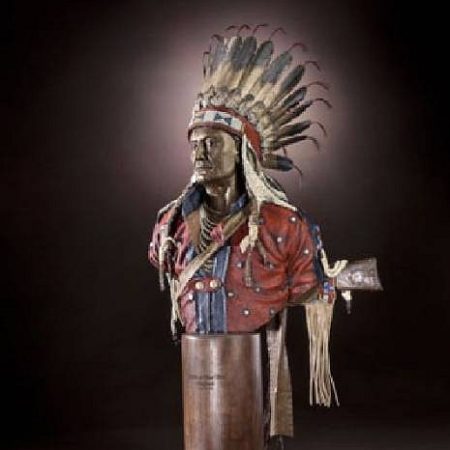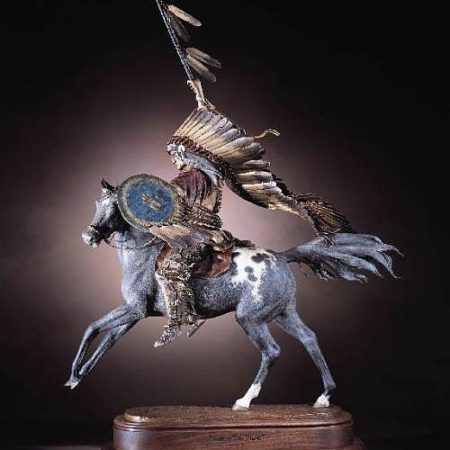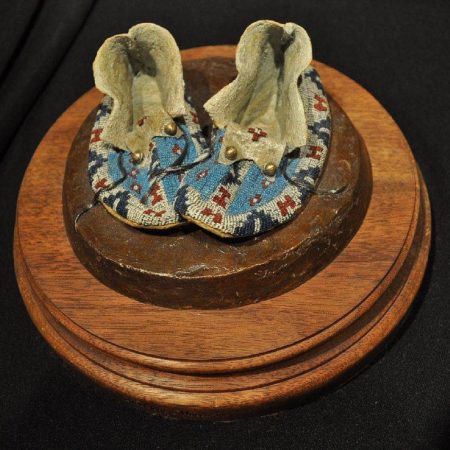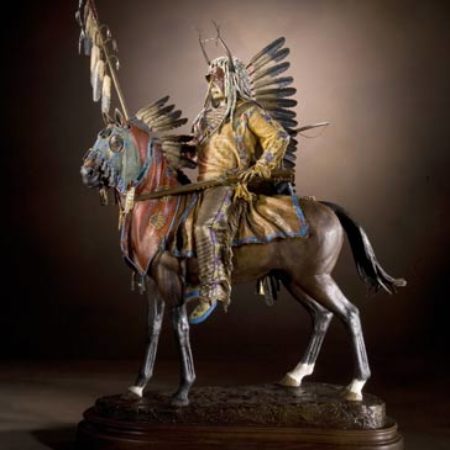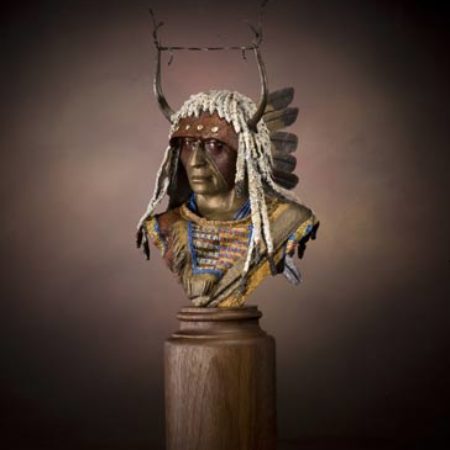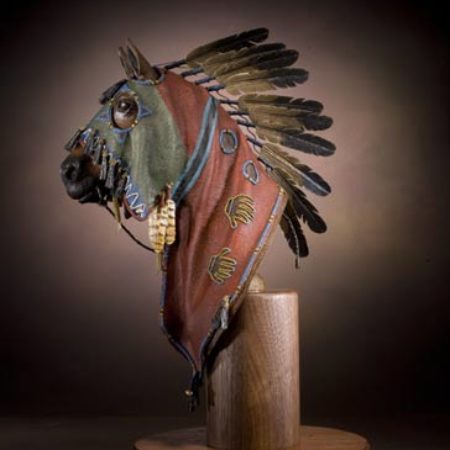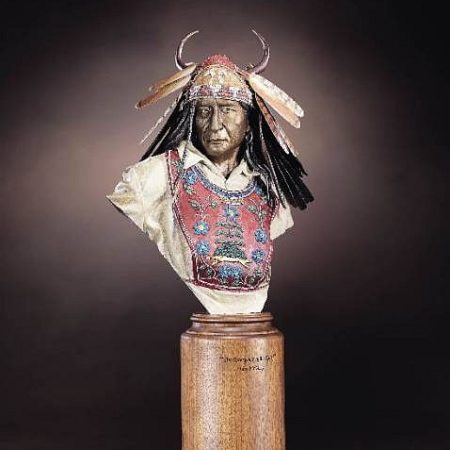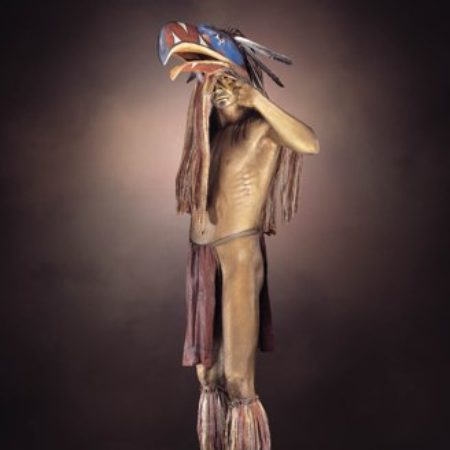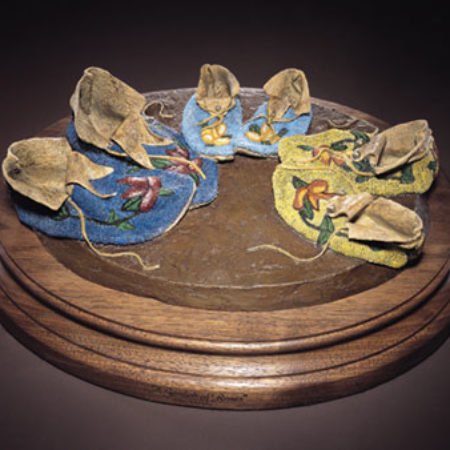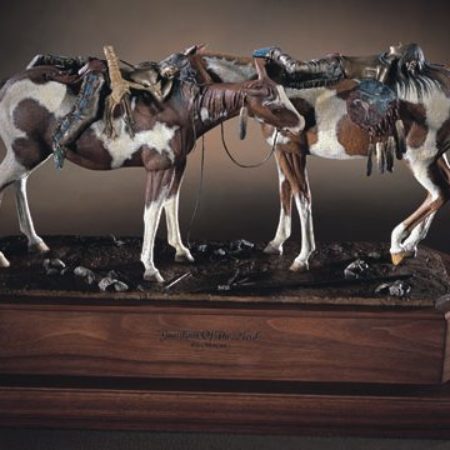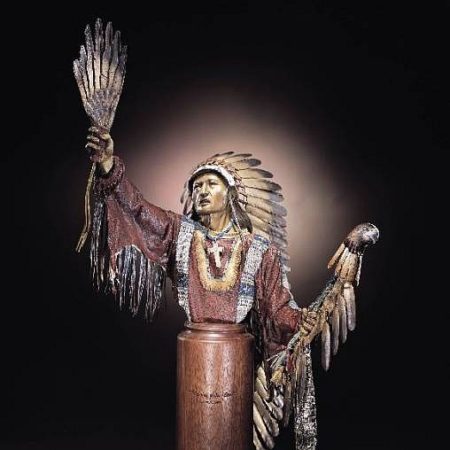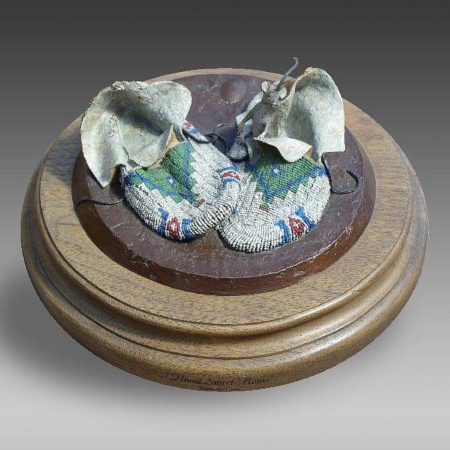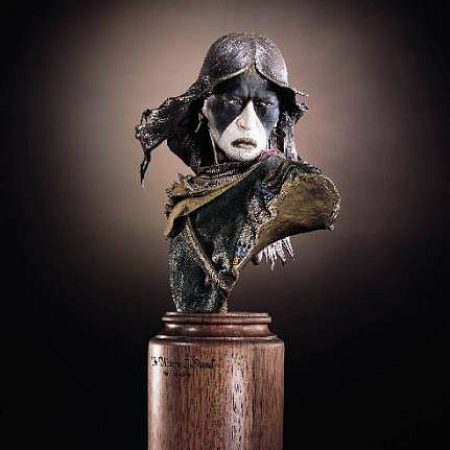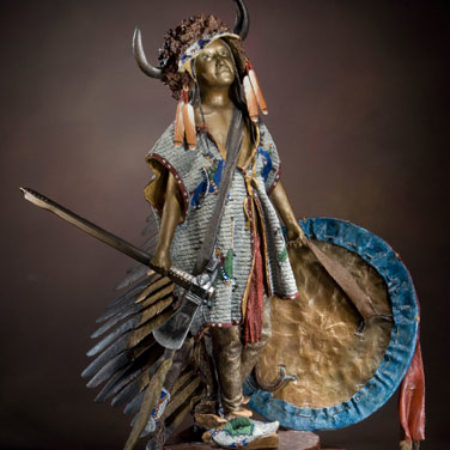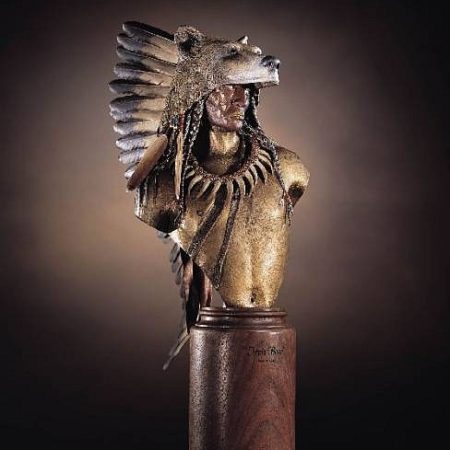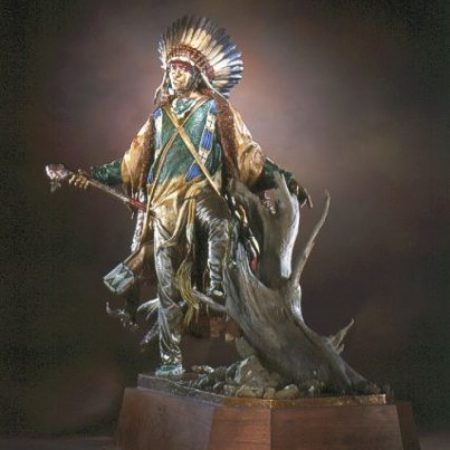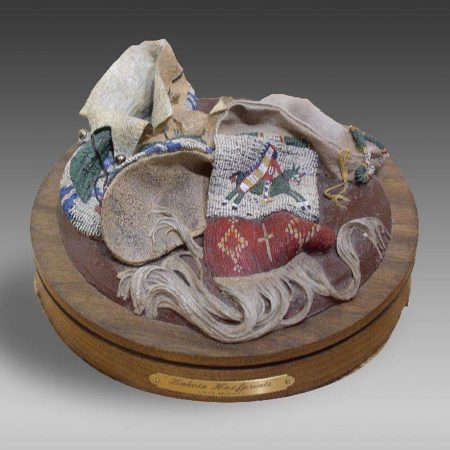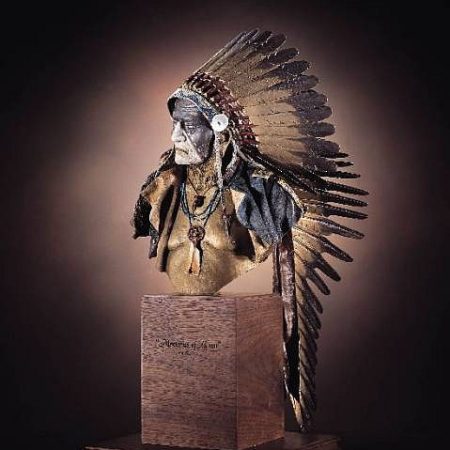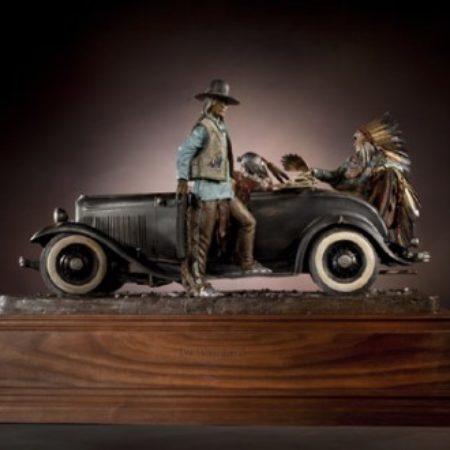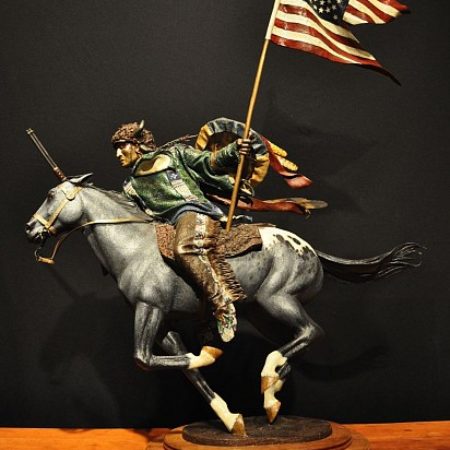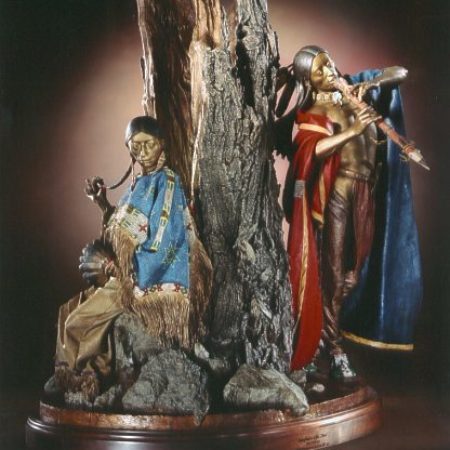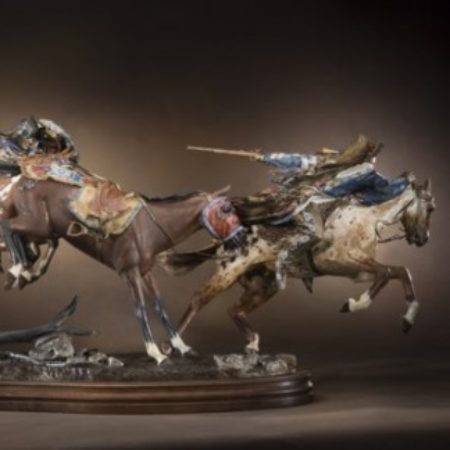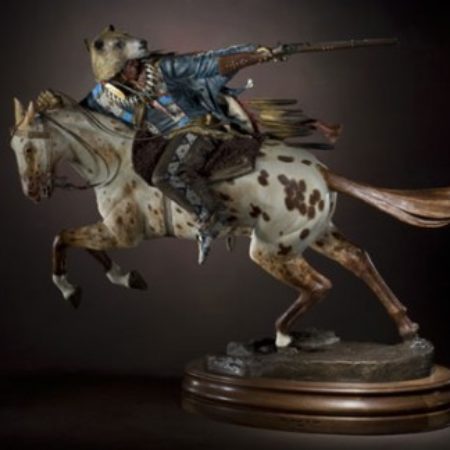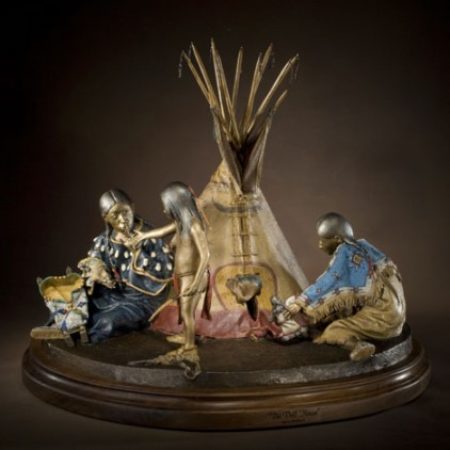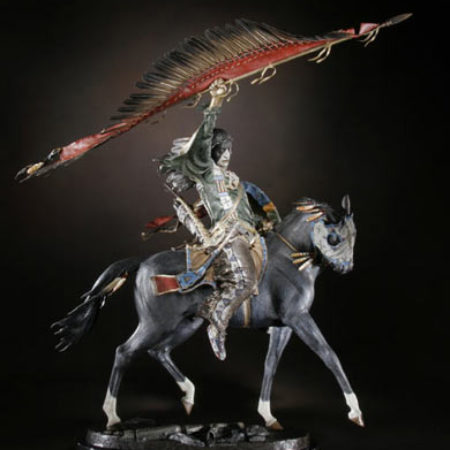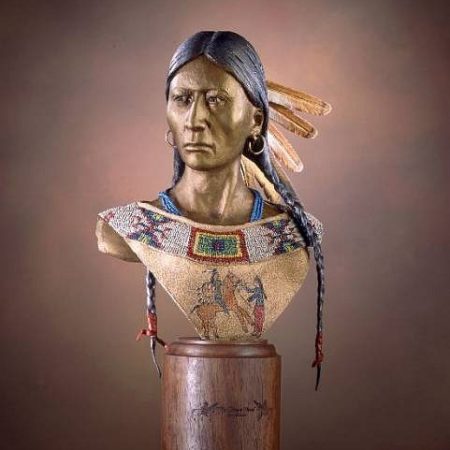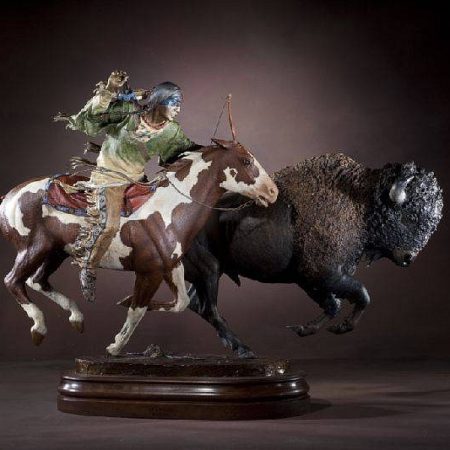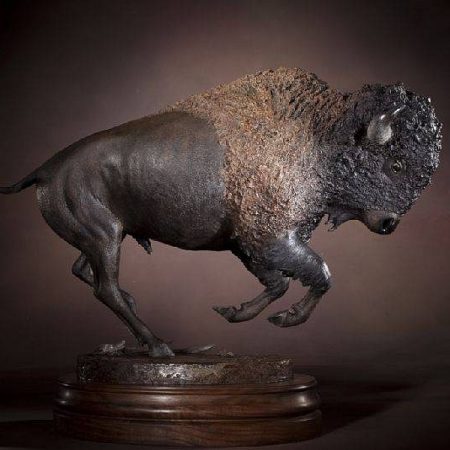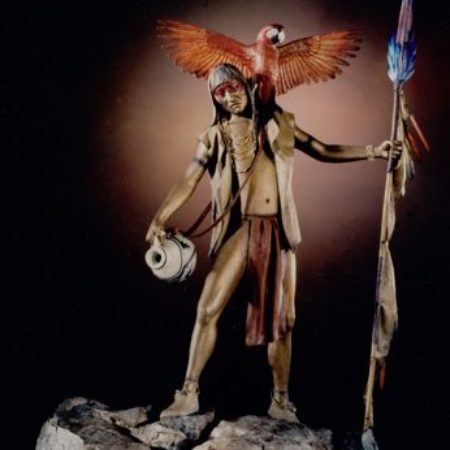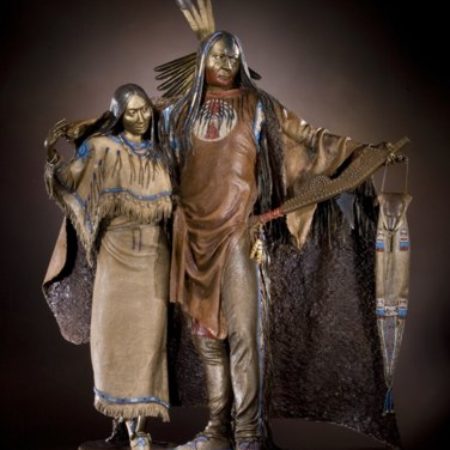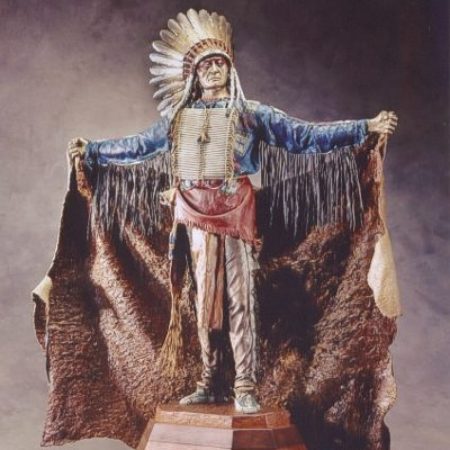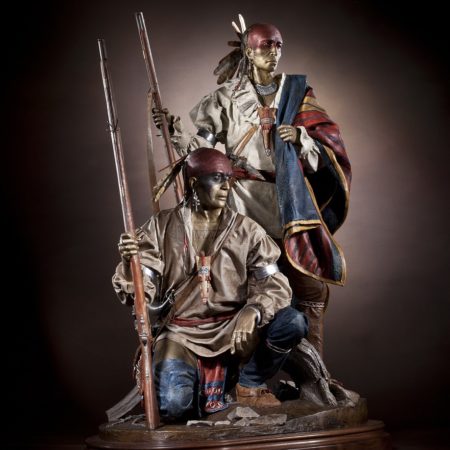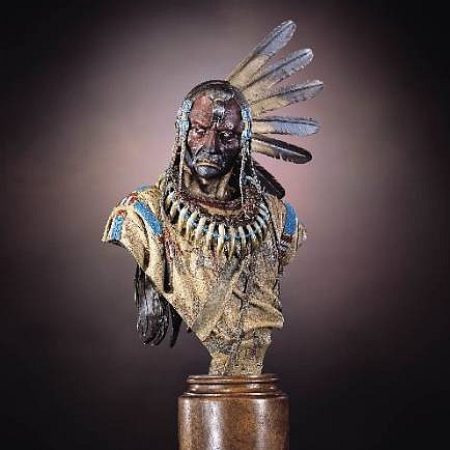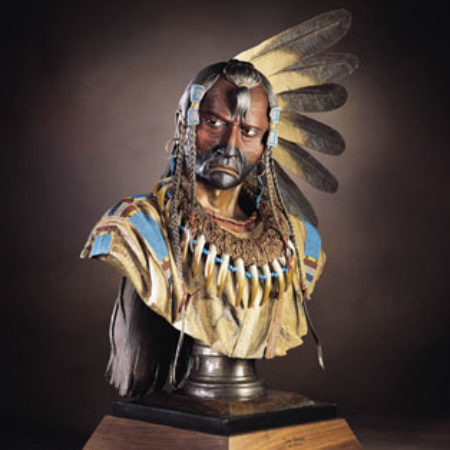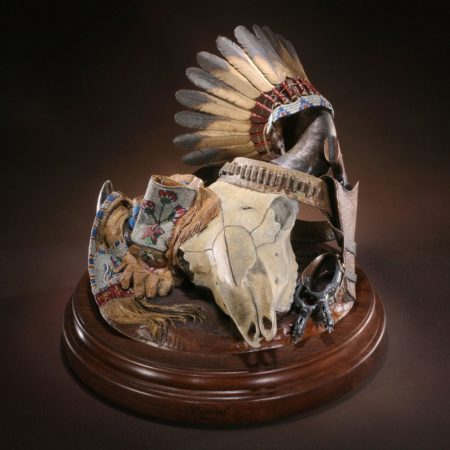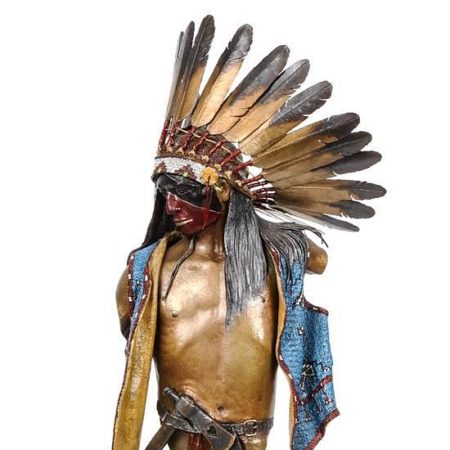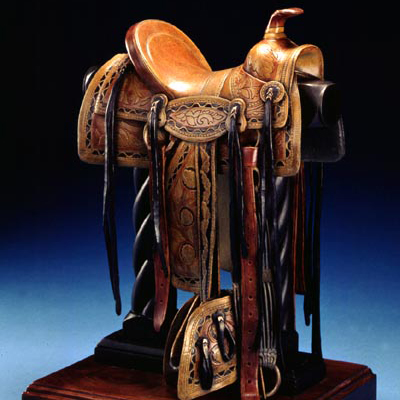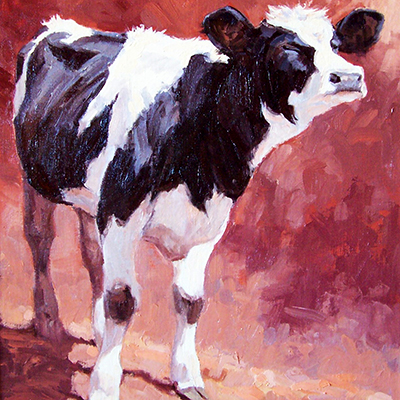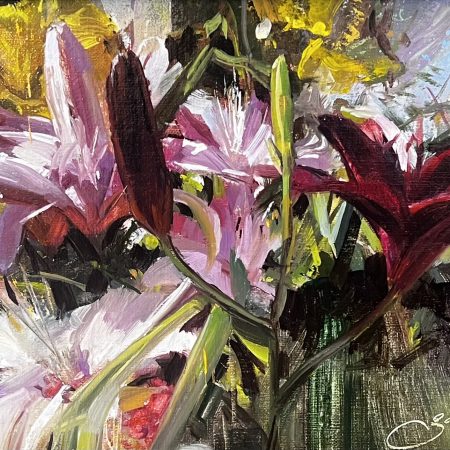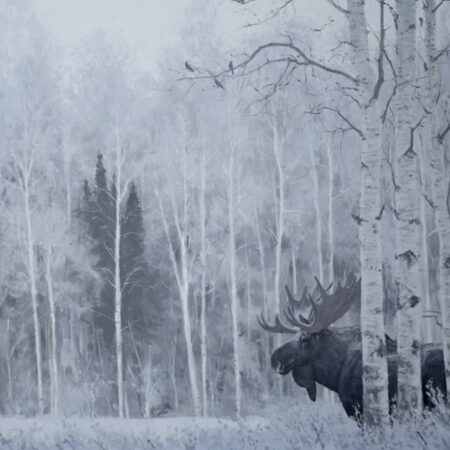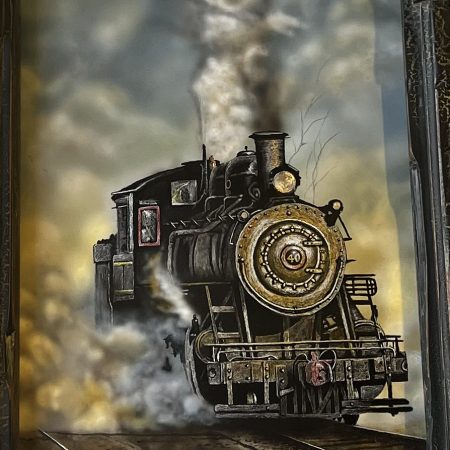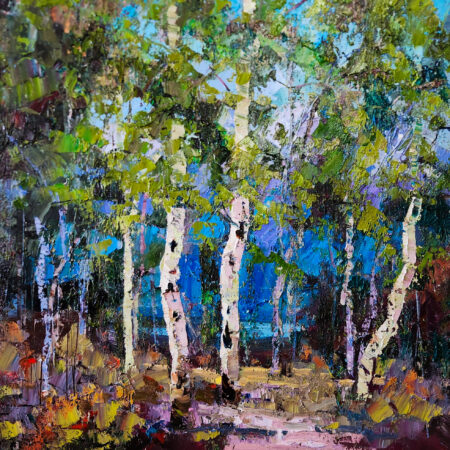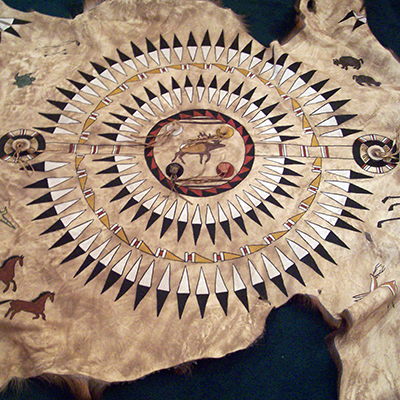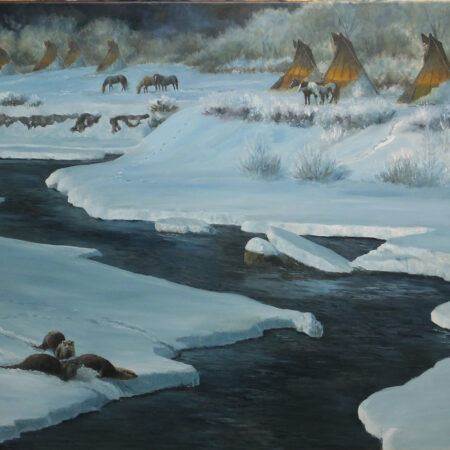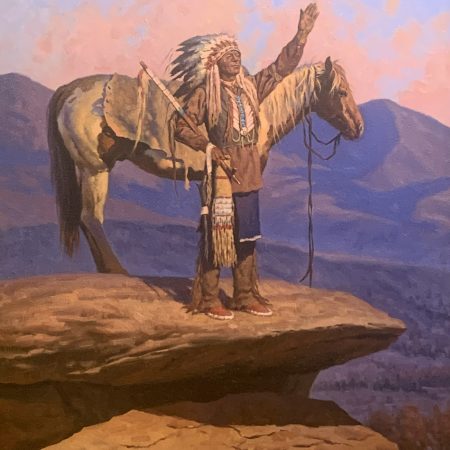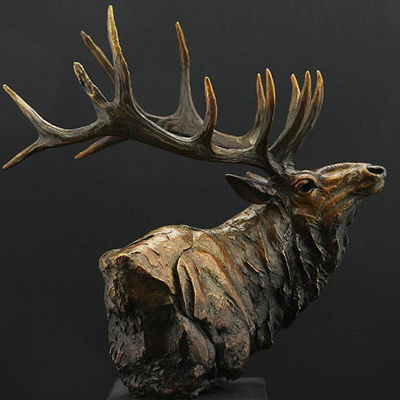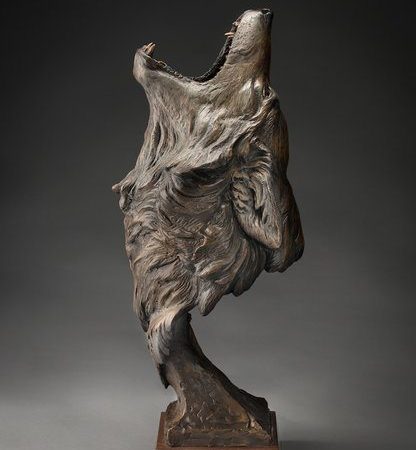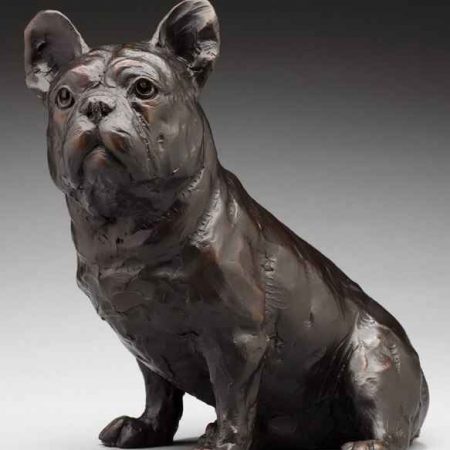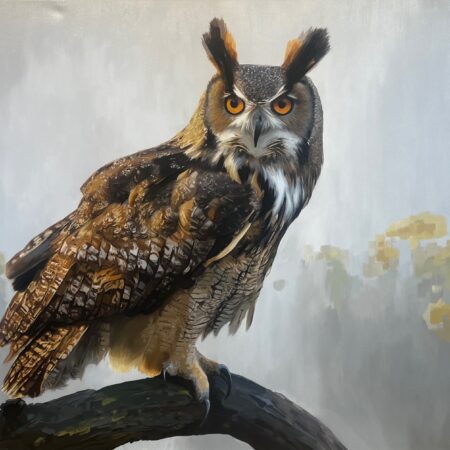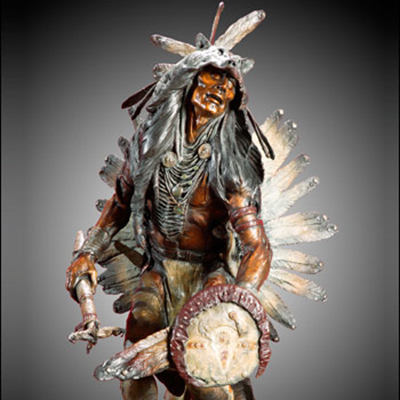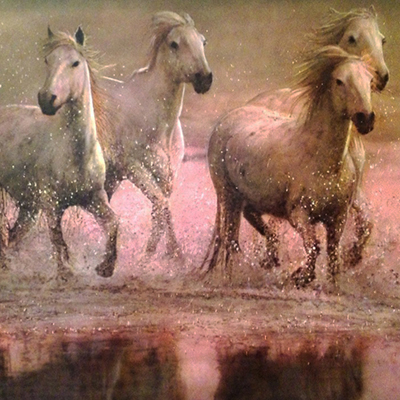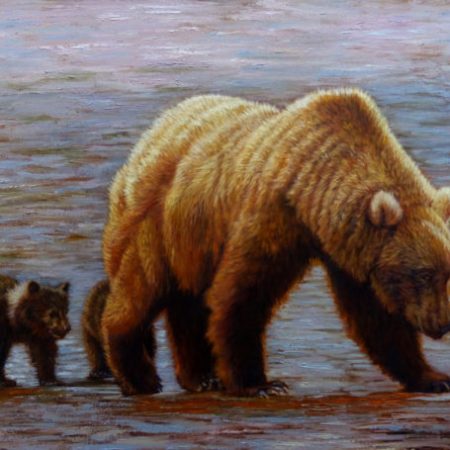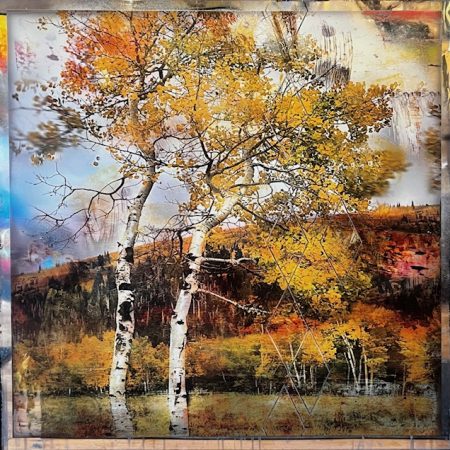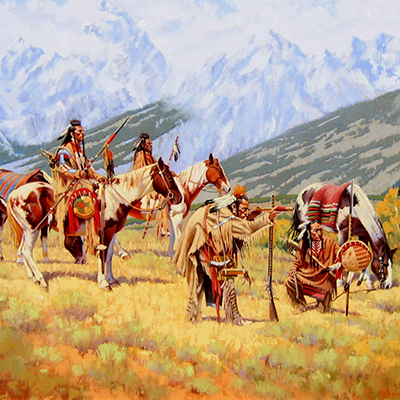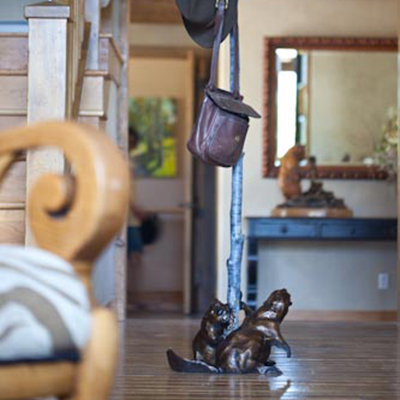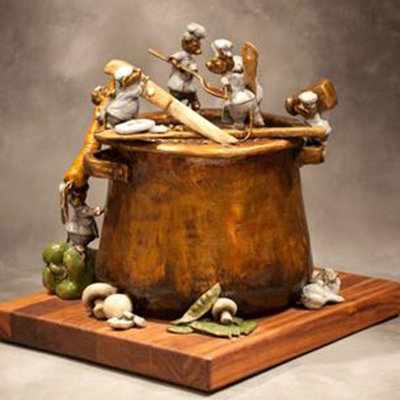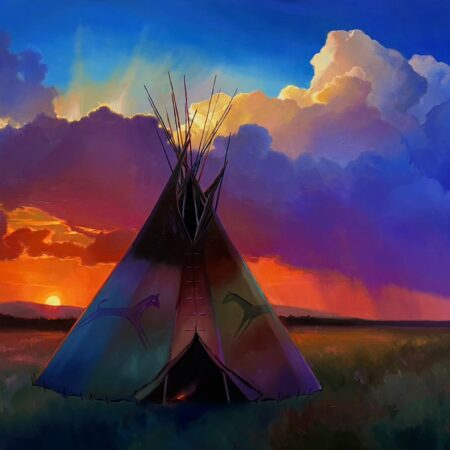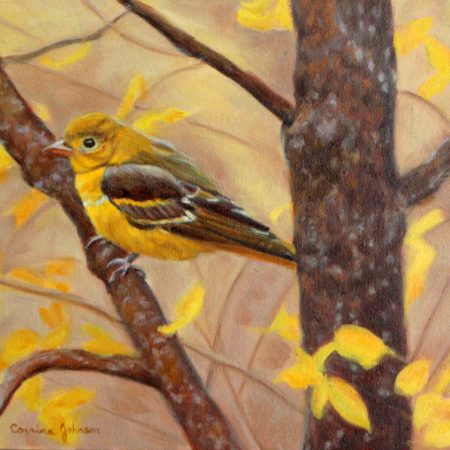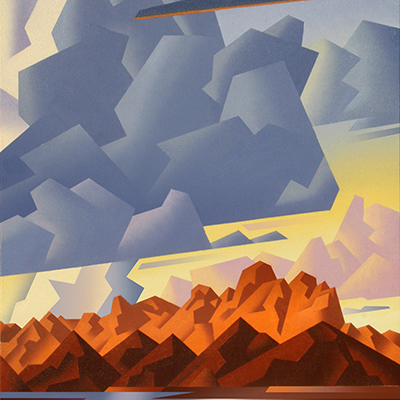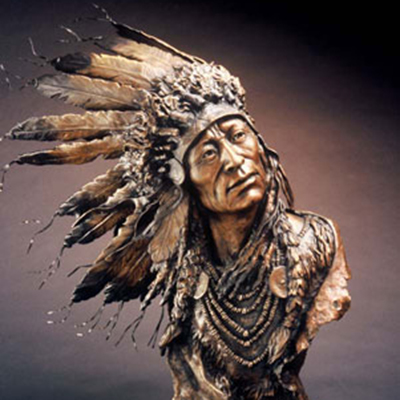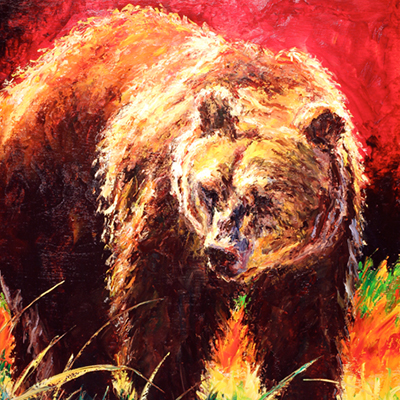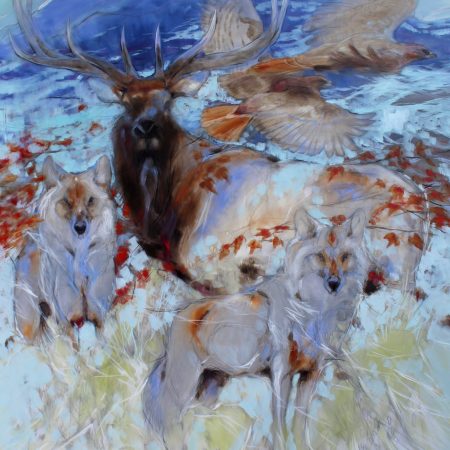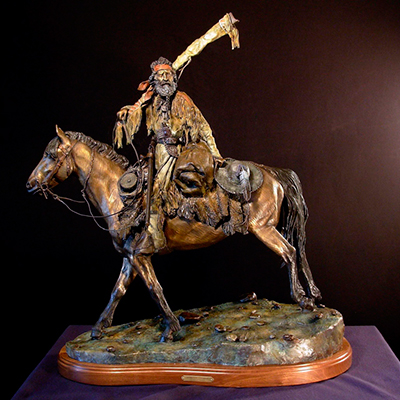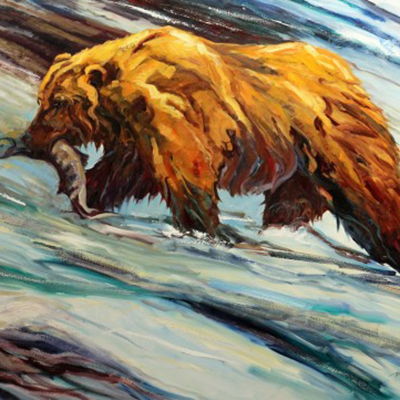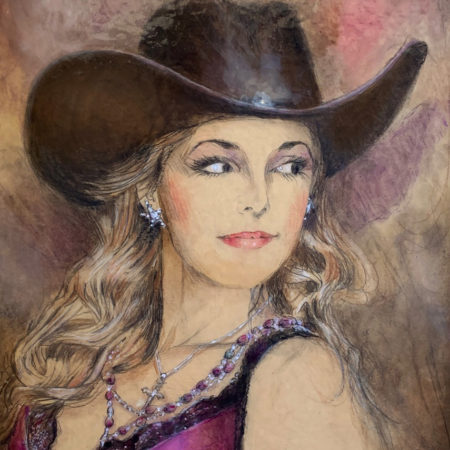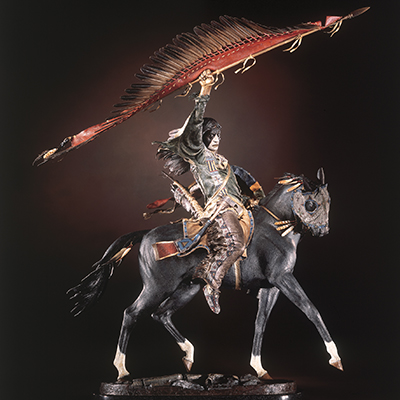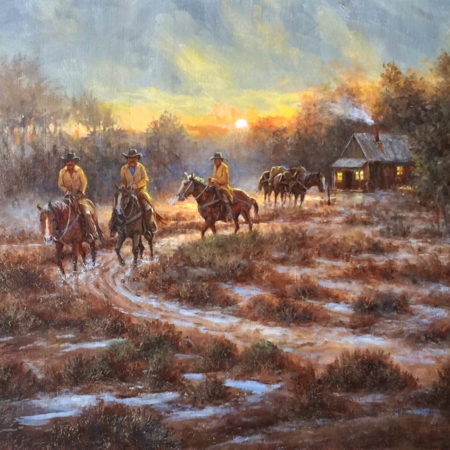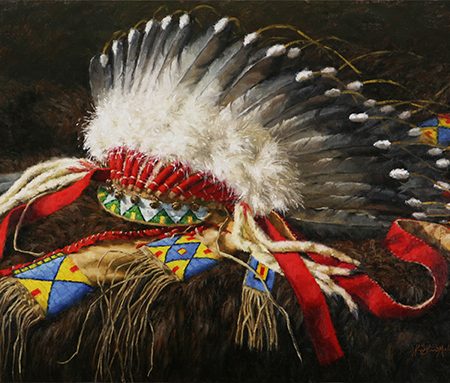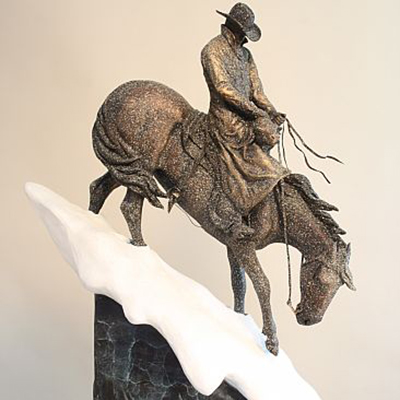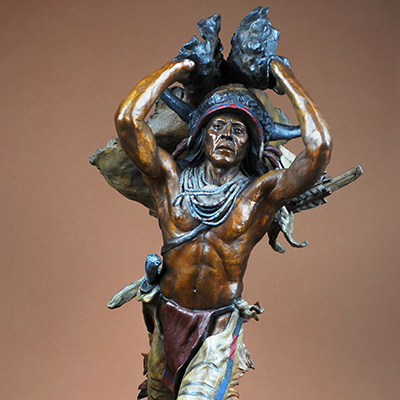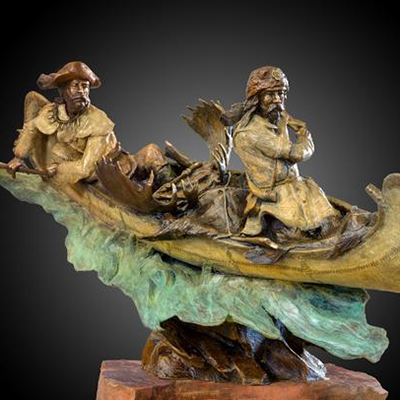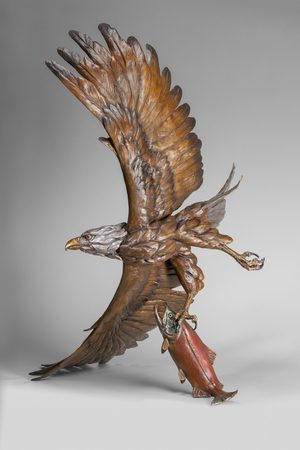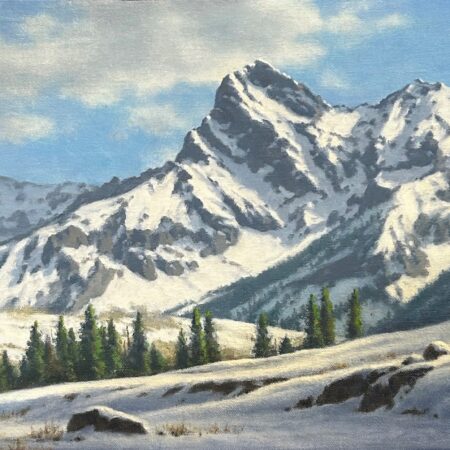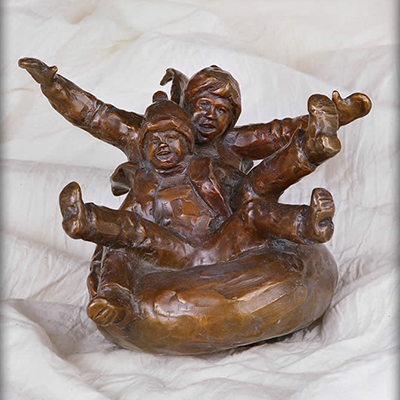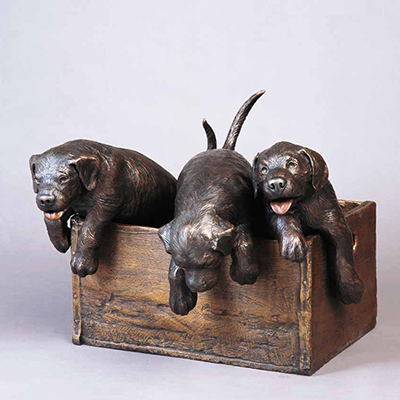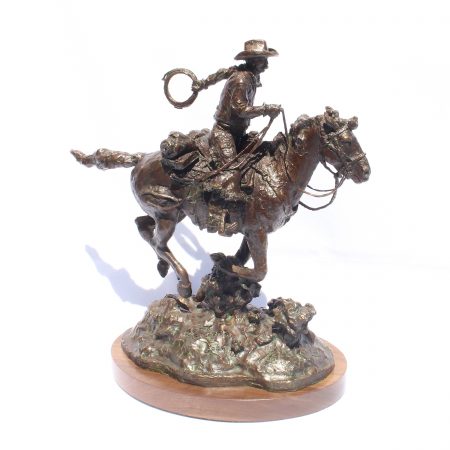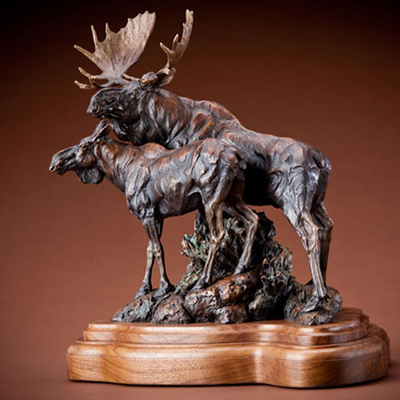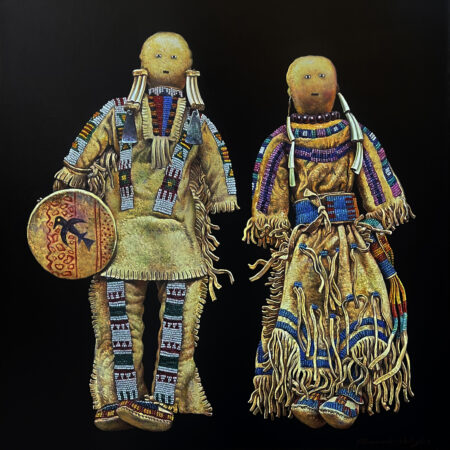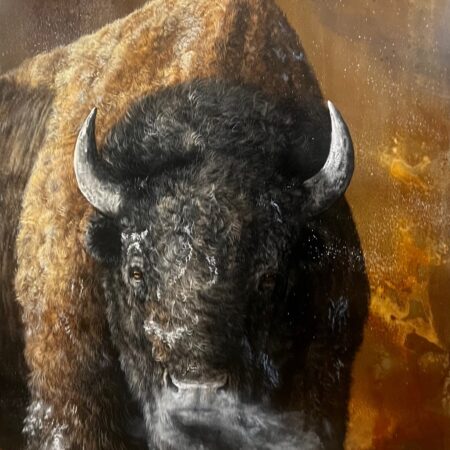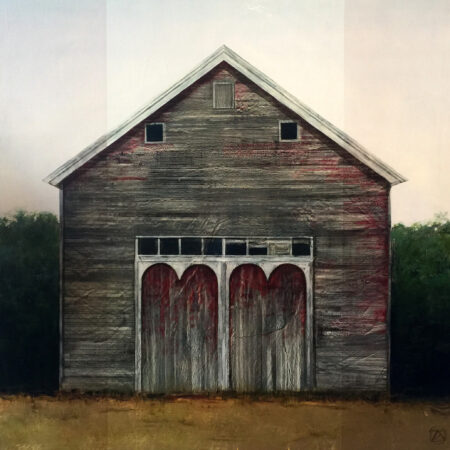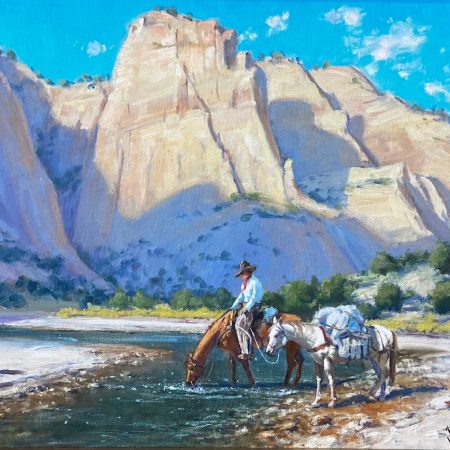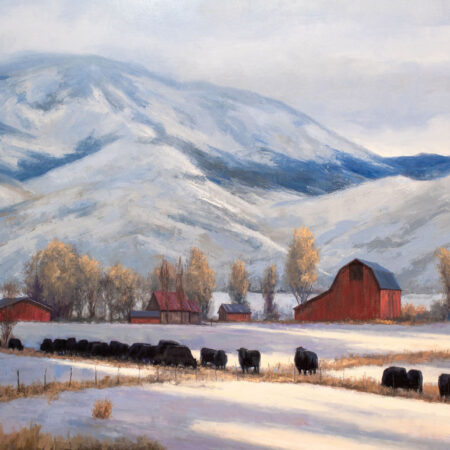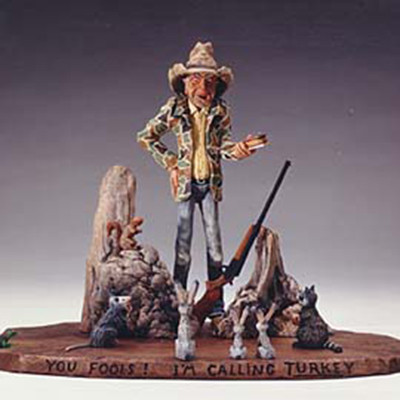DAVE MCGARY
Dave McGary, at 52, is becoming a living legend among contemporary artists of the American West. He is considered the Master of Realism depicting Native American Indians and his many awards during the past decade more than verify his popularity among collectors and fellow artists. His ability to capture the human spirit knows no equal, and his attention to detail in form and historic content are exhilarating.
Dave was born the son of a ranching family in Cody, Wyoming. As a teenager, he was one of four people in the United States awarded a grant to study anatomy and the bronze-making process with master craftsmen in Italy. After returning to America in 1978, Dave spent the next three years working at a bronze foundry, developing his own style and techniques. In 1981, Dave opened his own foundry and finishing facility in the southern mountains of New Mexico. By 1982, Dave's bronze work began receiving recognition at national art competitions, receiving Best of Show, and gold and silver medals for Death Mask, Story of the Little People, My Heart Is the Eagle, War Deeds, Birth Of Long Soldier, and Long Soldier. Two of his bronzes, Horse Thief and Buffalo Warrior are in the permanent collection in the Old Executive Office building at the White House Complex, Washington, D.C.
Dave has been selected by jury twice to show in the prestigious Hubbard Art Award for Excellence Show, where he was one of the most popular artists, selling out his work. His life-size work, Long Soldier, was selected for public display at the State Capitol Building in Santa Fe. He was commissioned by the City of Santa Fe to depict Don Pedro de Peralta, founder of Santa Fe, and his engineer. The one and one-half times life size, 18 foot high and 22-foot long monument was installed and dedicated during Fiesta Days in September 1992. In July of 1993, Dave's work was exhibited in a One-Man Show at the Russell Senate Rotunda in Washington, D.C. In 1994, Dave was selected as the only artist from the United States to have a one-man show in the United Nations Environment Programme's exhibit, Art and the Earth-A Dialogue with Nature.
Early in 1995, he constructed his own Finishing Studio and Expressions in Bronze Gallery. In July, Free Spirits at Noisy Water, Dave's monumental sculpture of eight horses running through a natural landscape, was installed at Hubbard Museum of the American West in Ruidoso Downs, New Mexico. The bronze sculptures and the surrounding park were designed, sculpted and engineered by McGary. Considered an engineering feat, the eight horses, weighing 3,000-5,000 pounds each, are balanced on only nine hooves. The monument depicts seven American breeds: Thoroughbred, Quarterhorse, Appaloosa, Paint Mare with Foal, Arabian, Morgan and Standardbred. One of the largest equine sculptures in the world, it totals 255 feet in length. The top-most horse, a Standardbred, stands more than 36 feet in the air as he leaps from a man-made mountain. In July of 1995, Dave also received the New Mexican of the Year Award, and in October, he received the Honorary Lifetime Alumni Award from Eastern New Mexico University for his contributions to the Arts in New Mexico.
Dave released his new limited edition book in May of 1997 entitled "Dave McGary, American Realism in Bronze: A Twenty Year Retrospective". This limited edition volume features text by noted author Michael Duty, as well as detailed photographs of Dave McGary's works over the past twenty-three years. A signed, numbered book is enclosed in the walnut base of each bronze. In October of 1997, as a show of appreciation for all of his Collector's continued support over the years, Dave and Molly held a Gala for all of the Collectors who had purchased this piece. Each Collector and a guest was flown from their current locations to Ruidoso and stayed at the Inn of the Mountain Gods for the Gala. During this Gala, the guests attended many different functions including one evening with a dinner and dance.The performers were internationally acclaimed recording artists Ottmar Liebert, and Native American flautist, Douglas Spotted Eagle. Each performed a private concert for the guests at this function. Also, one of the events on the itinerary was a book signing in which Dave personalized each book for the Collectors.
On February 22, 1998, Dave installed a 30-foot tall, 15-foot wide monument weighing over ten tons at the Houston Astrodome. The sculpture, "Touch the Clouds", depicts a nineteenth century Miniconjou Chief who fought alongside Crazy Horse at the Battle of Little Big Horn. The project was announced at a ceremony and national media press conference in February of 1996, where Dave unveiled a 43 inch bronze Masterwork of the monument. Although the fine art collection owned by The Houston Livestock Show and Rodeo is extensive, "Touch the Clouds" is the first Native American depicted and the largest bronze figure of the sculpture collection. In May, "Bounty of Gray Hawk" and "Bear's Nest" masterworks were on loan to the International Museum of Art in El Paso, Texas. The museum had been closed for several years and had just recently been purchased by an individual and remodel for the reopening of the museum. The pieces were placed on exhibit during the grand opening month of the newly established museum.
August 20, 1999, brought wonderful news to McGary Studios, Dave was selected to sculpt the Shoshone Warrior and Peacemaker, Chief Washakie. There are three monuments of Chief Washakie, all of which will be approximately eleven feet in height. One of the three pieces will be placed in our nation's capitol, and the other two remaining will be placed at the Wyoming State Capitol and at the joint Shoshone and Arapaho Complex in Fort Washakie. Several artists were selected to send in their portfolios. Once their portfolios were received and looked over, then five finalists were chosen to go to Riverton, Wyoming for an interview and presentation. Dave was selected by the committee in which there were several members of the Washakie Family. He worked closely with the committee and the family members on the completion of this project. The first piece was unveiled in a ceremony in September of the year 2000, and the second one in a ceremony in the month of October. Finally, the last one was installed in the month of February of 2001.
With portraits of America's founding fathers as a backdrop, descendants of legendary Shoshone leader Chief Washakie danced and drummed in colorful celebration as their ancestor was honored with a larger-than-life bronze monument in the history-rich U.S. Capitol rotunda. The bronze will be permanently displayed in the U.S. Capitol's prestigious National Statuary Hall Collection. Speaker of the House J. Dennis Hastert, former U.S. Senator Alan Simpson, Governor Jim Garinger of Wyoming and other dignitaries, including McGary, spoke to a crowd of over 300 persons including many senators and congressmen at the Chief Washakie dedication ceremony on September 7, 2000. Descendants from the Wind River Reservation (Shoshone) at Fort Washakie, Wyoming, and the Flathead Reservation (Salish/Kootensi) in Arlee, Montana, and other Native Americans led the program. A National symbol for all Native Americans, the Chief Washakie monument was in the U.S. Capitol rotunda for up to a year where more than 25,000 people a day viewed the bronze. The only other Native American depicted in the National Statuary Hall Collection at that time is Sequoyah, a bronze donated by Oklahoma in 1917. The rotunda dedication kicked off two days of Washakie-related events in Washington D.C. On September 8, 2000, the Washakie family donated a 28-inch-tall Masterwork of Chief Washakie to the permanent collection of the Smithsonian at the headquarters of its National Museum of the American Indian. Also during the week, an exhibit titled "Legacy in Bronze: The Life of Chief Washakie, The Works of Dave McGary" was displayed in the rotunda of the Russell Senate Office Building.
McGary's epic work "Battle of Two Hearts", purchased by the state of Wyoming and gifted to the University of Wyoming, was installed in front of Washakie Center on the university campus. The monument is a depiction of Shoshone Chief Washakie before a famous battle with the Crow Chief Big Robber. Washakie emerged the victor of the battle and the battle site was named Crowheart Butte. The chief was instrumental in securing lands and educational rights for his people. The bronze sculpture stands over thirty feet high and was dedicated in the fall of 2005. Portions of the sale of the Masterwork, Maquette, and Bust of this sculpture are being donated by Molly and Dave McGary for scholarships for Shoshone students at The University of Wyoming. Over twenty scholarships have been awarded thus far.
"Emergence of The Chief", standing over twenty-four feet, was unveiled in October 2005 on the campus of Concordia University in Montreal, Canada in the heart of Mohawk territory. In Emergence of the Chief Dave depicts a ceremony in which a venerated clan mother of the Mohawk peoples of North America is shown as she circles the chosen chief instructing him in his life-long duties and responsibilities as a leader in the Iroquois Confederacy. The twice life-size sculpture sits on a six sided engraved stone base, representing the five original nations of the Iroquois Confederacy along with the title panel. The monumental sculpture stands amid the "Three Sisters" (corn, beans, and squash plants) native tobacco plants and running water on the Concordia campus. A portion of proceeds from the sale of Masterwork, Maquette and Bust sizes are being donated by Dave and Molly McGary for a scholarship fund expressly for Mohawk students at Concordia University.
Today, Dave McGary is internationally known and recognized for his works in bronze. His sculptures are in permanent collections at the U.S. Capitol National Statuary Hall, the Smithsonian Museum and the White House collection in Washington, D.C. Other monuments are placed at The Houston Astrodome, the Eiteljorg Museum of the American Indian in Indianapolis, the Buffalo Bill Historical Museum in Cody, Wyoming, and The University of Wyoming, Governors Mansion in Cheyenne, Wyoming & the Tribal Office Building at Ft. Washakie Wyoming. Additional installments are placed at the Shinnecock Native Culture Museum in New York, McCord Museum in Montreal Canada, J.W. Marriott Scottsdale, Arizona, Mayo Clinic and Hospital Scottsdale, Arizona, The Gene Autry Museum in Los Angeles, California, the Tenth Circuit Court of Appeals in Denver, Colorado, the Wyoming State Capitol in Cheyenne, and Concordia University in Montreal, Canada.

